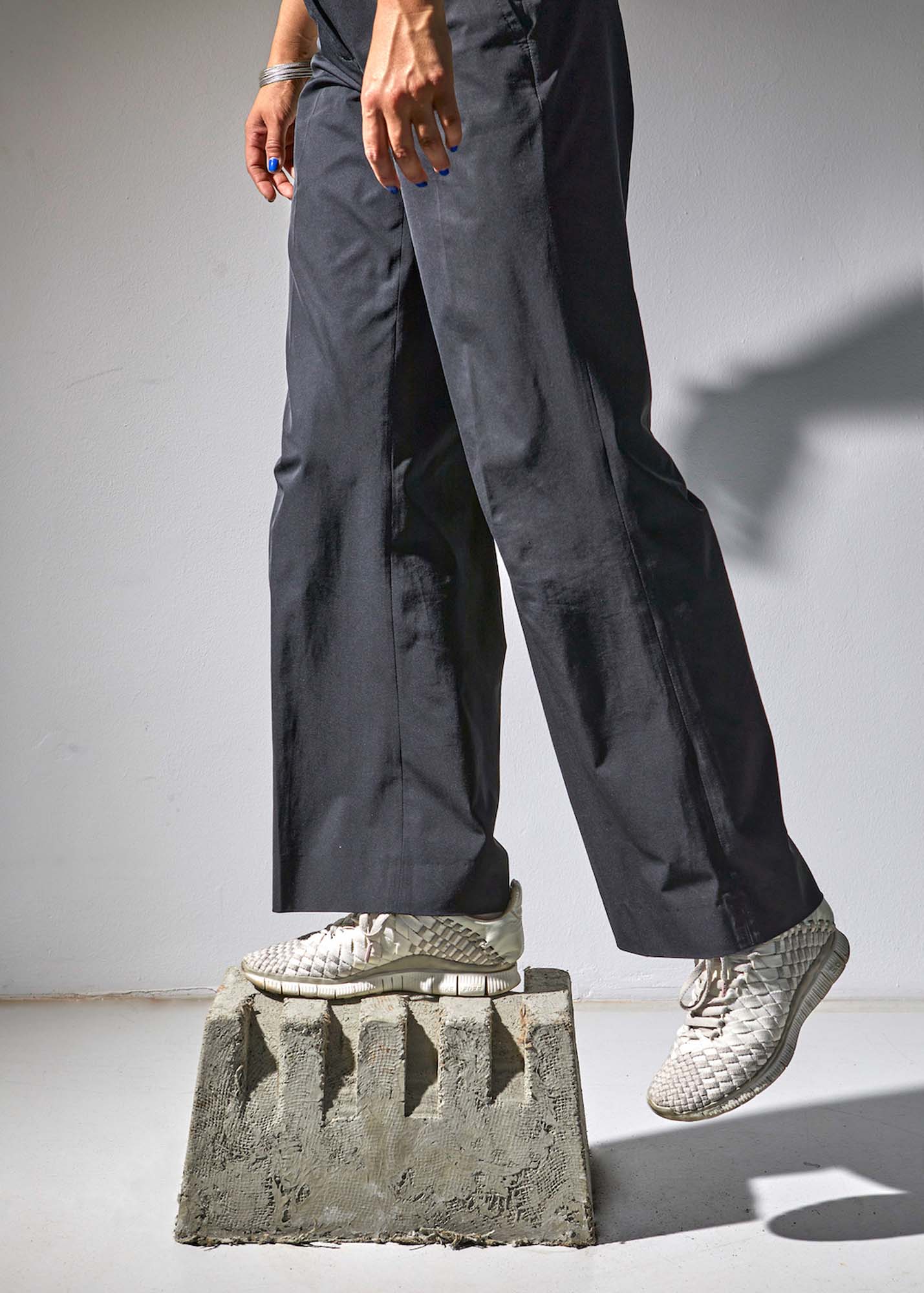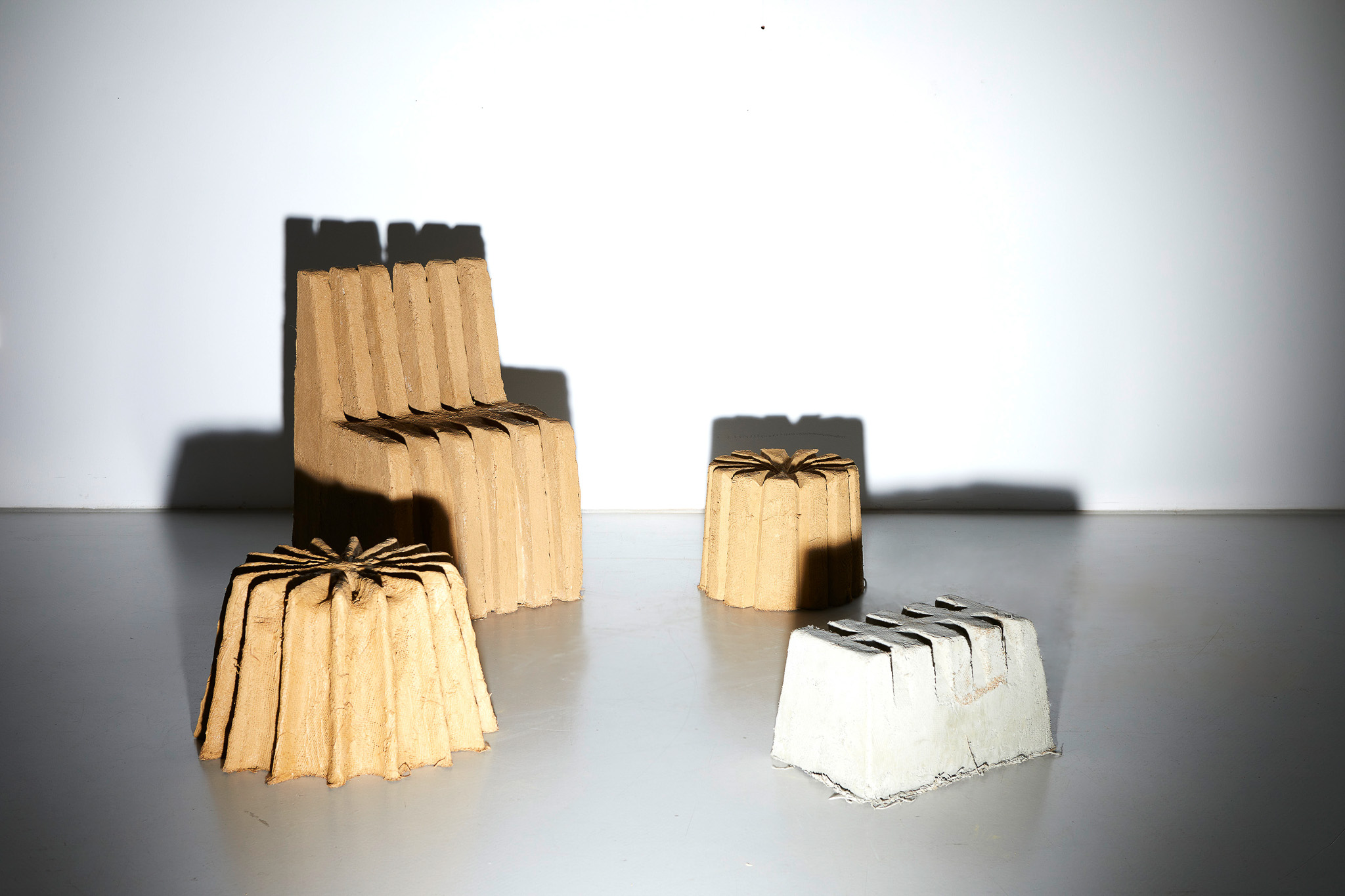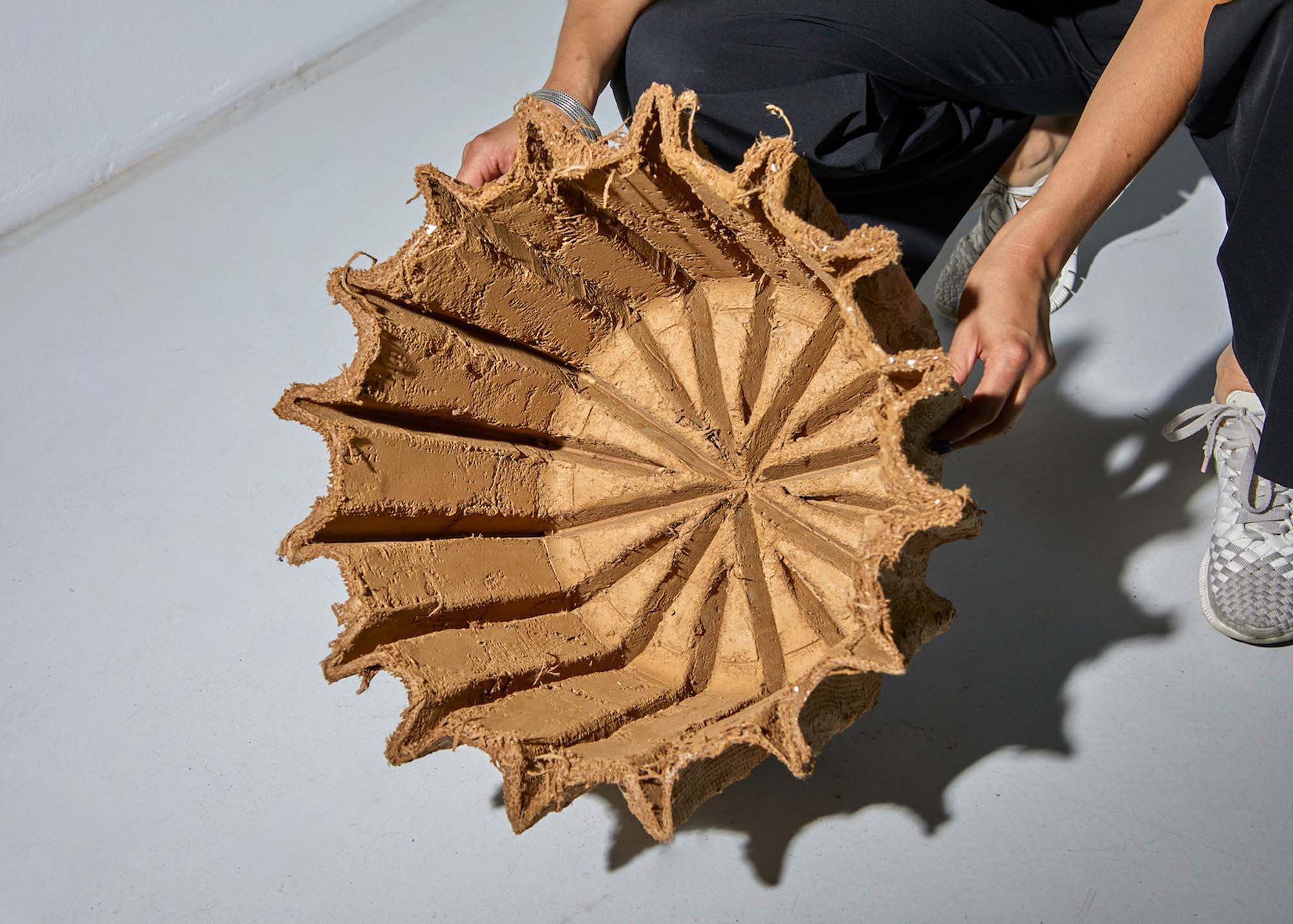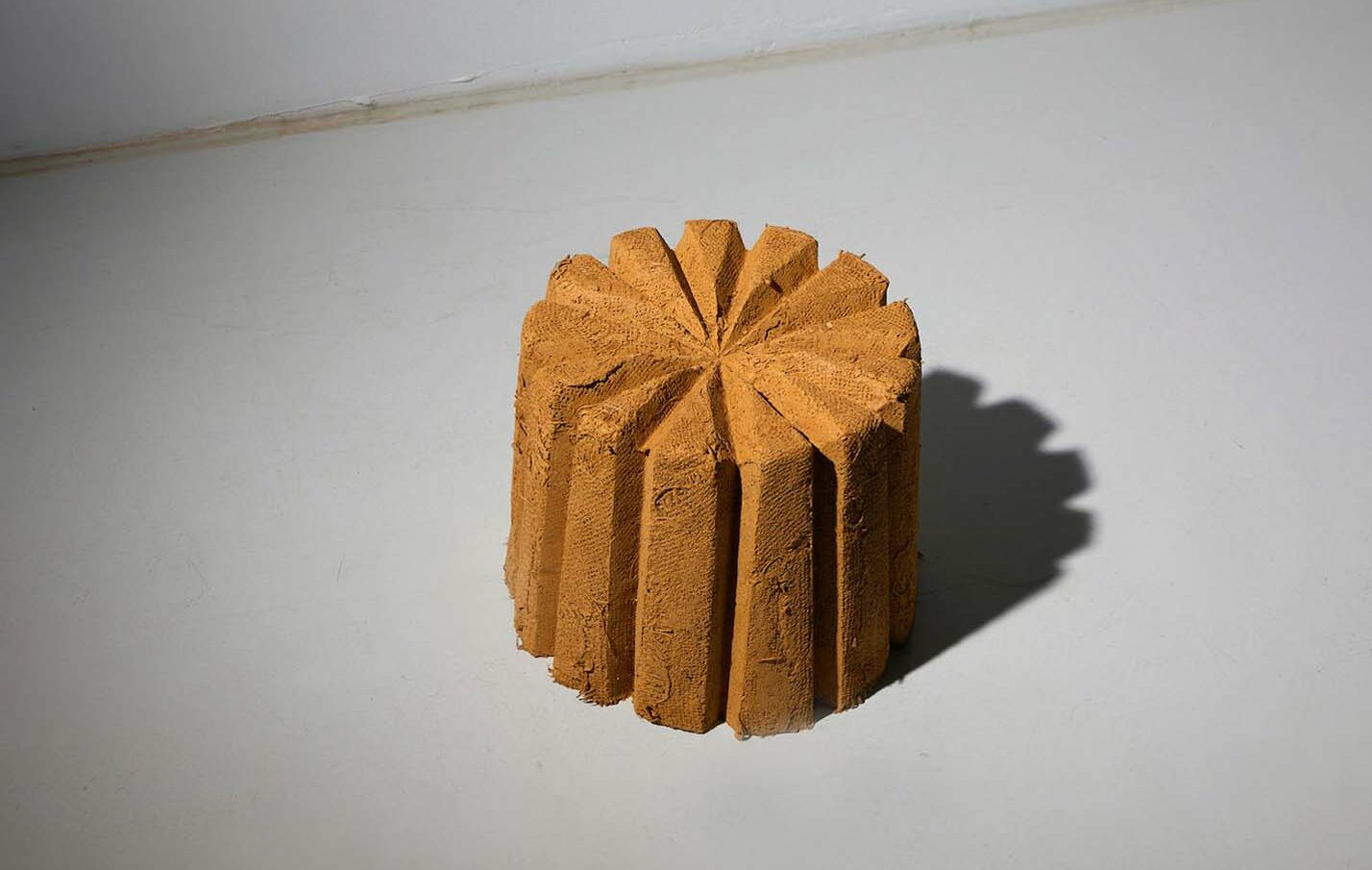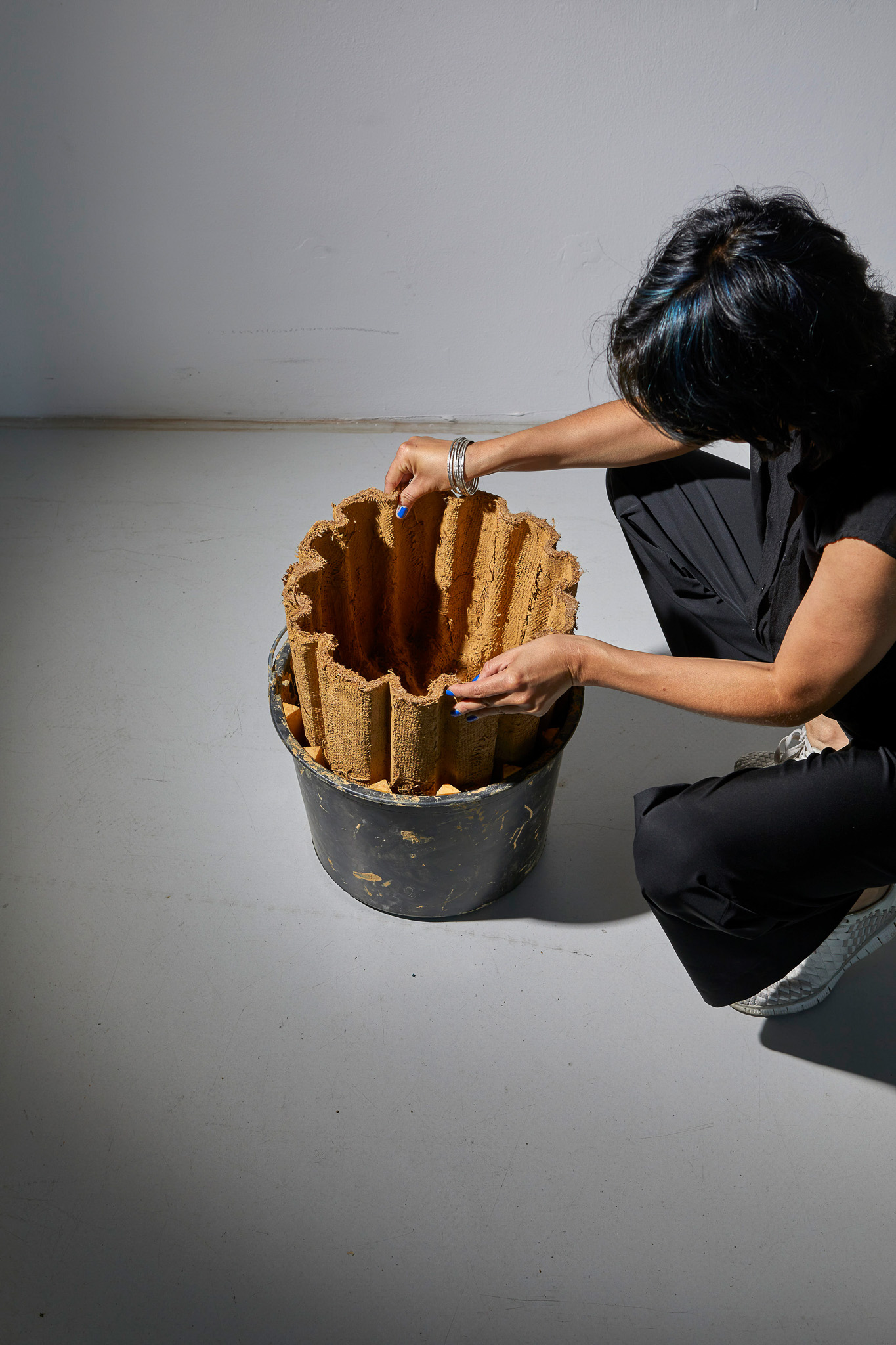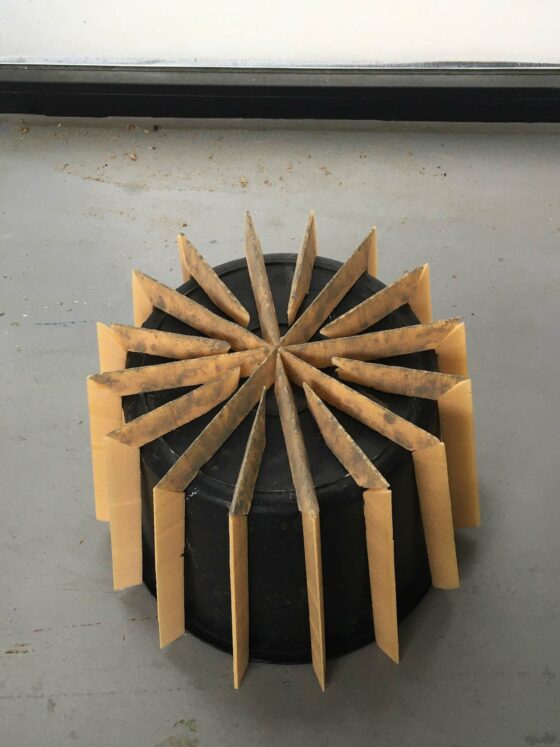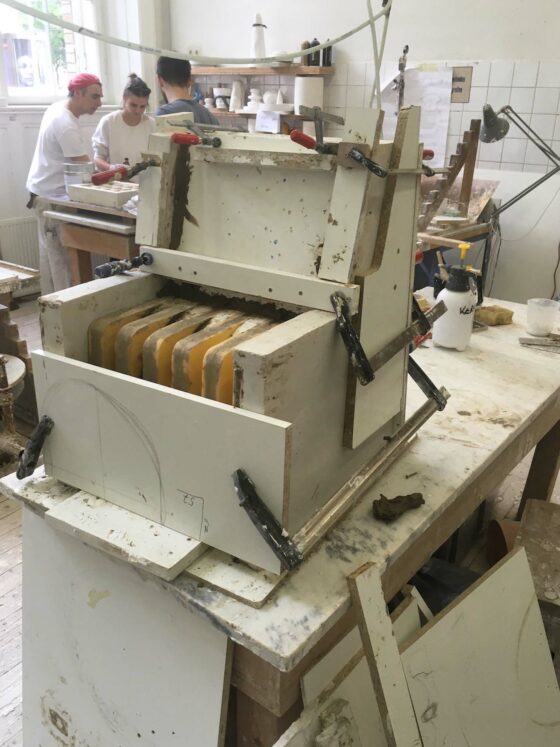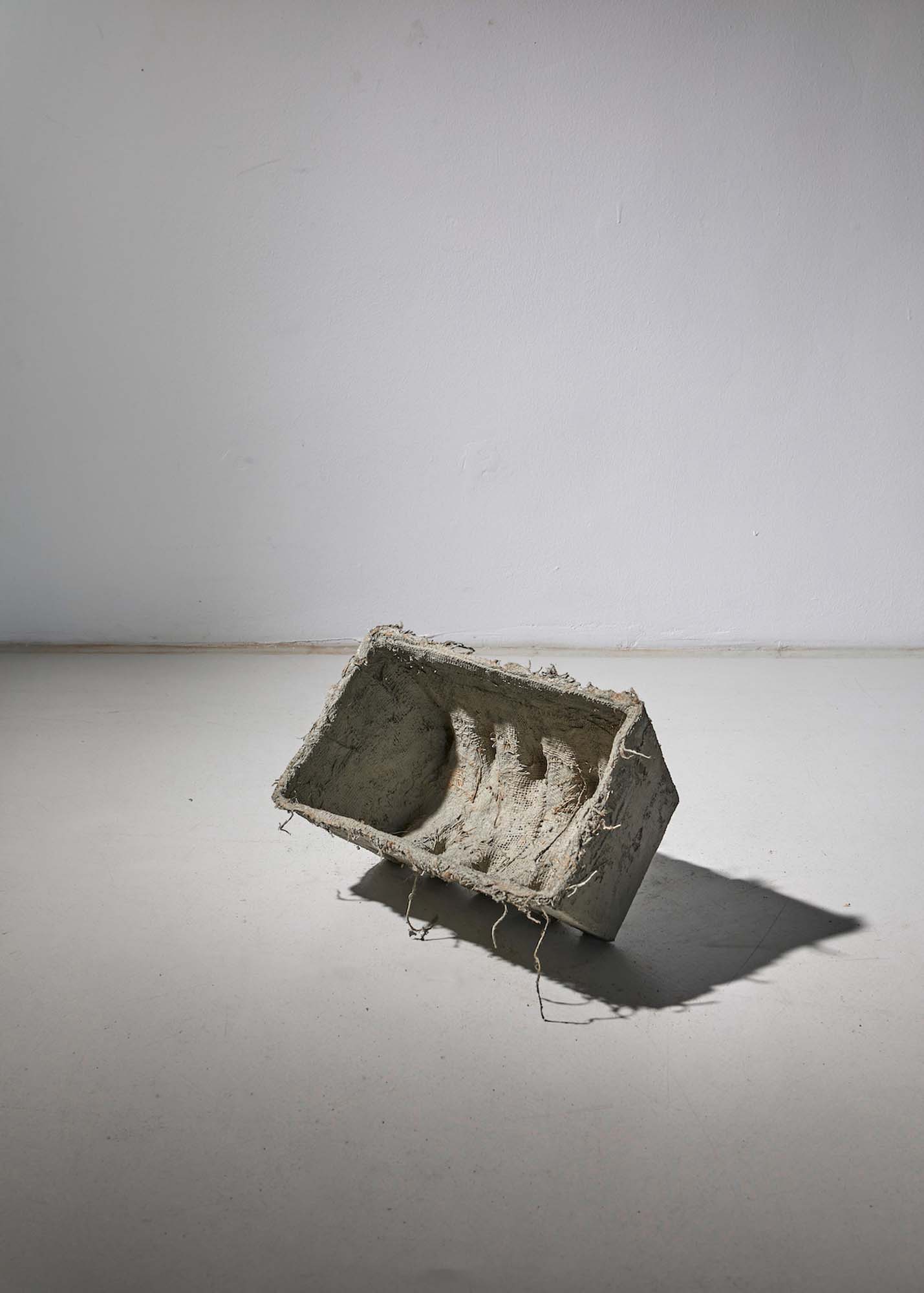ReclaimTheClay by Jasmit Hof
‘ReclaimTheClay’ is a material study focused to the tensile strength of clay constructions, as clay is very good at bearing the pressure, but not at bearing tractive forces. In the course of the study, 4 objects were created that differ in shape, weight and the way they were created. ‘ReclaimTheClay’ are examples of the study results and is intended to show the potentials of construction and the unexplored fields of application of clay as the material.
Where Everywhere! Clay is a natural product that is available in large quantities worldwide and, therefore, it is possible to be quarried locally and used directly after a short preparation. Through this project, I want to point out that clay is not a niche building material, but an essential component of sustainable and modern architecture, which must be established as an equal building material, if the building industry is willing to reduce emissions.
Who Aimed at all disciplines in the construction industry and is intended as a proposal to reconsider clay in its architectural application.
Why Clay regulates humidity, balances out temperatures, is 100% recyclable and biodegradable, and its extraction is local, requires little energy, and you can find it everywhere. Another great property is that clay behaves like a composite material. If you add certain additives, its properties can expand. Since clay is very good at bearing pressure, but not at bearing tractive forces, this material study addresses the following question: What additives can be added to clay and how should it be processed to increase its tractive forces and thus expand its range of applications?
How The study is divided into 3 phases.
In the first phase, the experiment is focused on the material itself. The addition of fabric (jute) creates a tensile strength in the clay that acts as a reinforcement. Along with the material, the geometric shape of the object is important for its stability. Due to their geometric properties and curvatures, closed formwork is one of the most stable shapes and therefore has a very high load-bearing capacity.
During the second phase, four objects were created, which differ in size, shape and appearance, but with a common basic form – the formwork.
To protect the dusty surface of the objects, they are finished with casein – a protein extracted from milk. It protects the surface from external influences, such as water and abrasion, and is open to diffusion. The positive properties of the clay are thus preserved.
CONTACT jasmit.hof@icloud.com
